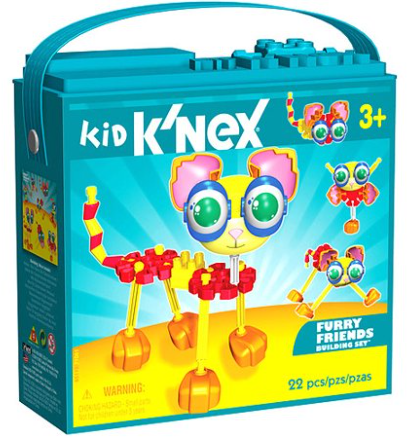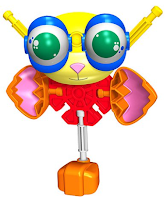 |
| Mancala for Kids - Practice thinking ahead and using strategy |
Mancala is a 2-person game that has been around for hundreds of years, some say thousands, and is played around the world. Mancala will require strategic thinking and problem solving skills. As the old saying goes for so many of these types of games, it takes minutes to learn and a lifetime to master. Playing Mancala is also a great way to practice in-hand manipulation skills, over and over and over, without it even feeling like work.
I have seen this game in many sizes and with a variety of different playing pieces. The game board comes in a couple of different versions - either manufactured in one long piece or hinged like this one, so that you can fold it over on top of itself and store the pieces inside. The board has 12 identical holes/pits/pockets (different people call them different things) cut into it and two longer holes, one at each end, called stores or mancalas.
This particular game comes with small plastic animals for playing pieces, which are popular with kids. Many of the mancala games come with smooth glass stones, easier for sliding in and out of the hand. You can use anything you want to use for playing pieces as long as you can fit about 9-10 of them into one of the pits. Dried beans, small stones, marbles, anything small that you have 48 of would probably work. In some areas Mancala is played by digging small pits into the ground and using seeds for markers. It's a lot to think about and watch, but it's a fun game.
Object:
Have the most playing pieces in your store at the end of the game.
Set up:
Place the board lengthwise between the two players, so that each player is facing a row of 6 pits. Randomly place four animals in each of the 12 pits.
Play:
Players take turns. A player starts his turn by picking up the contents from one pit on his side of the board and, moving to the right and starting with the very next pit, drops one of the animals in each pit until they are gone. If he passes his store (on the far right of his side of the board) he drops in one animal. If he is still holding animals after he passes his store, he will continue around the board, dropping them into his opponents pits. If he gets as far as his opponents store and is still dropping animals, he skips dropping one into his opponents store.
If the last animal you drop ends up in your store, you get another turn. You can do this a number of times in one turn as long as the last animal each time ends up in your store.
If the last animal you drop ends up in an empty pit on your side of the board, and your opponent has animals in his pit directly across from it, take that animal and any animals that are directly across from you in your opponents pit. (I have read directions that say you get to take your piece in addition to those across from you and I have read directions that say only take your opponents pieces.) Place them all into your store and your turn is over. Once animals are in your store they are safe.
Keep playing until all of the pits on one side of the board are empty - the game is over. The other player can keep all the animals that are still on his side of the board and places them into his store. Players each count the animals in their stores and the player with the most is the winner.
As you play, try to count the number of animals that are in a pit so that you will know exactly where they will land. It is a little harder to do with this particular board because the pits are smaller and when the animals get stacked up, they are hard to count.
Strategies:
- Pick up and play animals that will end in your store so that you can collect animals and take another turn.
- Pick up and play animals that set you up for landing the most animals into your store on your next turn.
- Pick up and play animals from a pit that has gotten built up so that your opponent cannot steal a lot of animals in one shot.
- Count the animals and watch your opponents side as well as your own so you can anticipate their next move and keep your animals from being captured.
- Pick up and play animals that will throw off your opponent's count if you see that they have set up their animals to get several into their store on their next turn.
- Work on spatial relations, critical and strategic thinking, problem solving, planning ahead, in-hand manipulation, manual dexterity, process skills, executive functioning skills, socialization skills, play and leisure exploration and participation
If you are interested in purchasing this game or just want more information, click on the image below.





